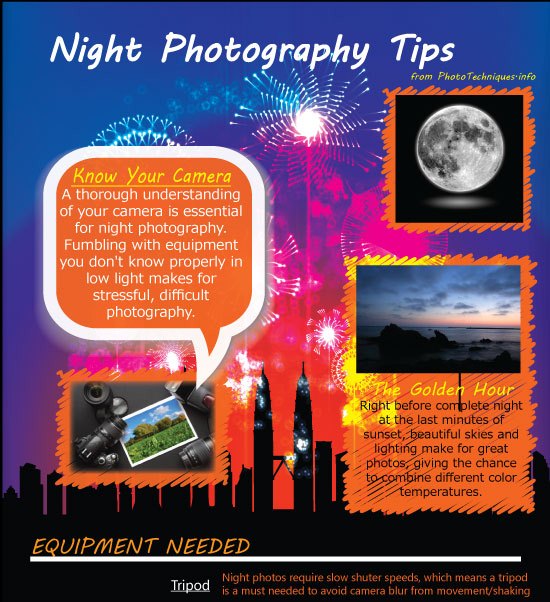Join Us To Find Necessary Digital Photography Pointers That Will Open Your Cam'S Potential-- Prepare To Catch Magnificent Pictures In A Snap!
Join Us To Find Necessary Digital Photography Pointers That Will Open Your Cam'S Potential-- Prepare To Catch Magnificent Pictures In A Snap!
Blog Article
Authored By-Ballard Ploug
When you initially grab your cam, it can really feel overwhelming with all the setups and options readily available. You could find yourself questioning just how to browse aperture, shutter speed, and ISO efficiently. Understanding these principles is critical, however there's even more to photography than just technical knowledge. Understanding composition strategies and illumination conditions can boost your photos substantially. So, what if you could find out basic methods to enhance your skills and begin recording remarkable photos sooner than you assume? Allow's explore exactly how to transform your photography journey.
Comprehending Electronic Camera Settings
Recognizing your electronic camera settings is essential for recording spectacular images. When you pick up your electronic camera, acquaint yourself with the 3 main settings: aperture, shutter speed, and ISO. Each plays an essential duty in how your photos turn out.
Beginning with aperture, which regulates the quantity of light going into the lens. A larger aperture (reduced f-number) lets in more light and develops a lovely history blur, ideal for portraits. Alternatively, a narrower aperture (greater f-number) keeps more of the scene in focus, perfect for landscapes.
Next, concentrate on shutter rate. This setting establishes for how long your electronic camera's sensor is subjected to light. A fast shutter speed freezes movement, which is excellent for activity shots, while a slow-moving shutter speed can develop sensational results like smooth water in landscapes.
Finally, readjust your ISO. This setup impacts your electronic camera's level of sensitivity to light. A greater ISO serves in low-light circumstances yet can introduce noise or grain. Go for the lowest ISO possible while still achieving proper exposure.
Structure Strategies
When you're out shooting, structure can make all the distinction in how your pictures reverberate with viewers. Beginning by using the rule of thirds; visualize your frame split into 9 equal sections with two straight and 2 upright lines. Setting https://triblive.com/local/westmoreland/small-businesses-in-western-pa-eager-to-reopen-but-not-sure-how-public-will-respond/ along these lines or at their junctions to create equilibrium and interest.
Next off, think about leading lines. These all-natural lines in your scene, like roadways or rivers, draw the customer's eye into the photograph, guiding them with the tale you're informing.
Don't forget about mounting; use components within your scene, like trees or home windows, to develop a frame around your topic, adding deepness and emphasis.
Additionally, watch on your background. A chaotic history can sidetrack from your primary subject, while a straightforward one aids it stand out.
Lastly, experiment with balance and patterns; they can develop a striking photo that captures interest.
Learning Lighting Issues
Grasping lighting conditions is essential for capturing stunning photos, as the best light can change an ordinary scene into something amazing.
Start by observing natural light at different times of the day. Early mornings and late afternoons supply the best light, referred to as the golden hour. https://telegra.ph/Break-Without-Standard-Advertising-Methods-And-Discover-Cutting-Edge-Approaches-To-Elevate-Your-Digital-Photography-Services---Y-01-08 , cozy tones throughout these times can enhance your images perfectly.
Do not shy away from overcast days either; diffused light can minimize rough darkness and develop a pleasing impact, specifically for portraits.
Try out backlighting by positioning your subject versus the light source. This strategy can produce a dreamy halo effect and include depth to your images.
Focus on your camera settings as well. Readjust the ISO, aperture, and shutter speed to fit the illumination conditions. A higher ISO can aid in low light, but be cautious of grain.
Use a tripod in darker environments to stay clear of blur.
Finally, do not forget man-made lights. Flash and continuous lights can be great tools for controlling light in challenging conditions.
Final thought
Finally, understanding your electronic camera does not need to be frustrating. By understanding your setups, applying structure strategies, and harnessing the power of all-natural light, you'll quickly elevate your digital photography abilities. Keep in mind, practice makes ideal, so go out there and explore your newfound expertise. With time and commitment, you'll be recording magnificent pictures that mirror your unique point of view. Delight in the trip, and do not fail to remember to have a good time while you're at it!
